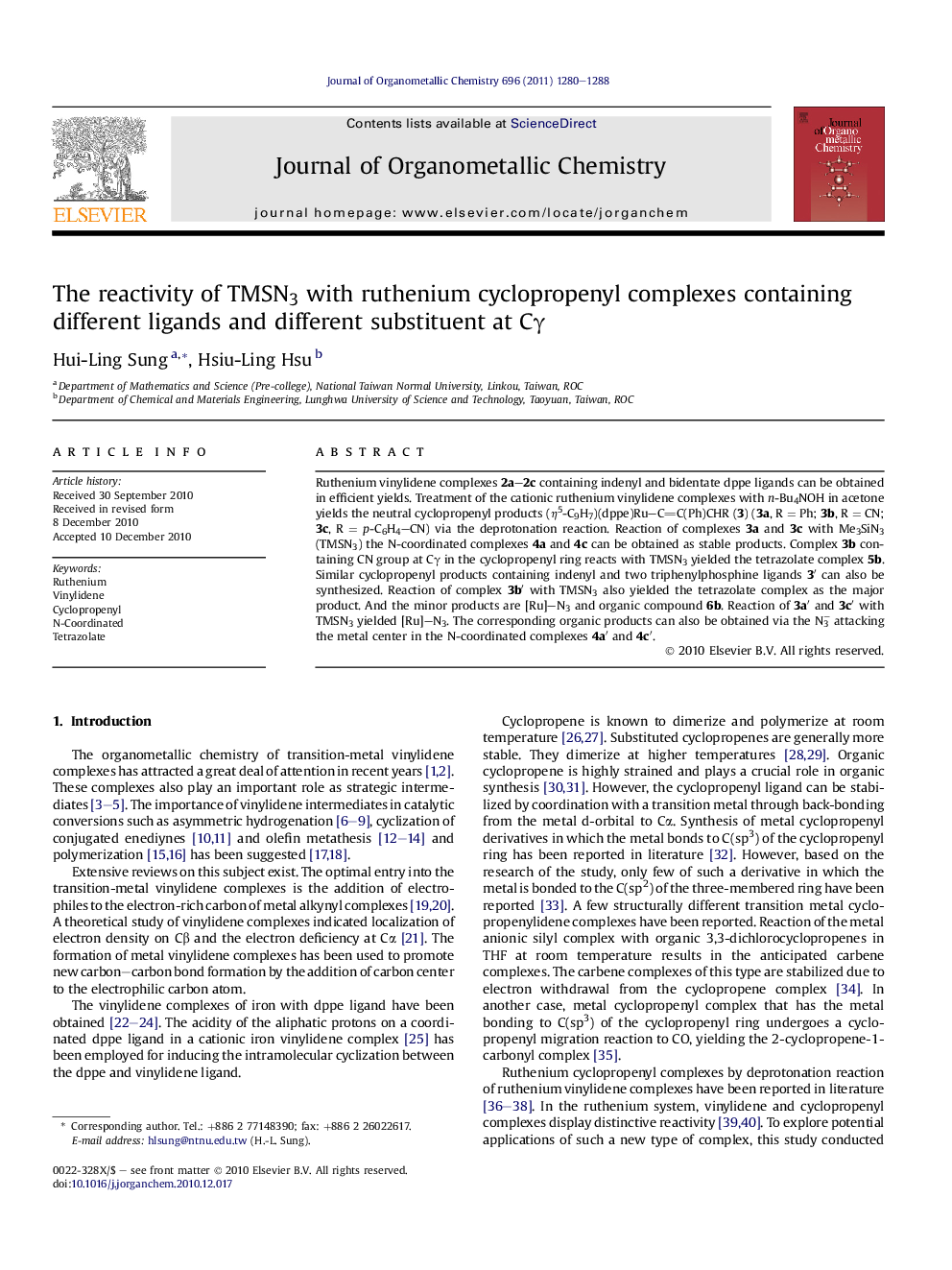| کد مقاله | کد نشریه | سال انتشار | مقاله انگلیسی | نسخه تمام متن |
|---|---|---|---|---|
| 1322449 | 977208 | 2011 | 9 صفحه PDF | دانلود رایگان |

Ruthenium vinylidene complexes 2a–2c containing indenyl and bidentate dppe ligands can be obtained in efficient yields. Treatment of the cationic ruthenium vinylidene complexes with n-Bu4NOH in acetone yields the neutral cyclopropenyl products (η5-C9H7)(dppe)Ru–CC(Ph)CHR (3) (3a, R = Ph; 3b, R = CN; 3c, R = p-C6H4–CN) via the deprotonation reaction. Reaction of complexes 3a and 3c with Me3SiN3 (TMSN3) the N-coordinated complexes 4a and 4c can be obtained as stable products. Complex 3b containing CN group at Cγ in the cyclopropenyl ring reacts with TMSN3 yielded the tetrazolate complex 5b. Similar cyclopropenyl products containing indenyl and two triphenylphosphine ligands 3′ can also be synthesized. Reaction of complex 3b′ with TMSN3 also yielded the tetrazolate complex as the major product. And the minor products are [Ru]–N3 and organic compound 6b. Reaction of 3a′ and 3c′ with TMSN3 yielded [Ru]–N3. The corresponding organic products can also be obtained via the N3− attacking the metal center in the N-coordinated complexes 4a′ and 4c′.
Various cyclopropenylruthenium complexes were synthesized by the reaction of cationic ruthenium vinylidene complexes. Reaction of the cyclopropenyl complexes with trimethylsilyl azide (TMSN3) yielded the N-coordinated ruthenium complexes. When CN group is at the cyclopropenyl ring, the tetrazolate complex can be obtained by [3 + 2] cycloaddition.Figure optionsDownload as PowerPoint slideResearch highlights
► Cationic ruthenium vinylidene complexes containing indenyl and dppe or two triphenylphosphine ligands can be synthesized.
► Deprotonation of the vinylidene complexes yielded neutral cyclopropenyl complexes.
► Reaction of the cyclopropenylruthenium complex with trimethylsilyl azide gave tetrazolate complex or the N-coordinated complexes.
Journal: Journal of Organometallic Chemistry - Volume 696, Issue 6, 15 March 2011, Pages 1280–1288